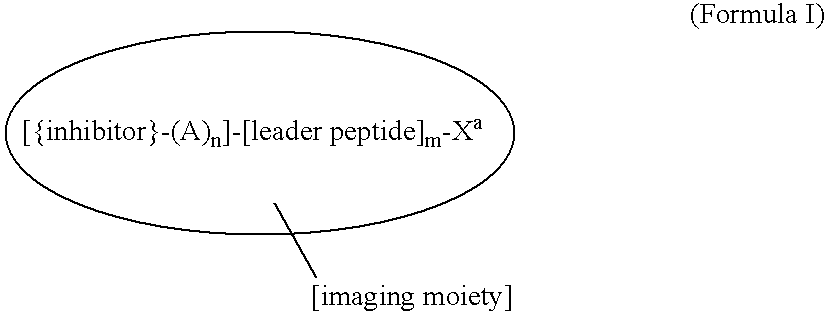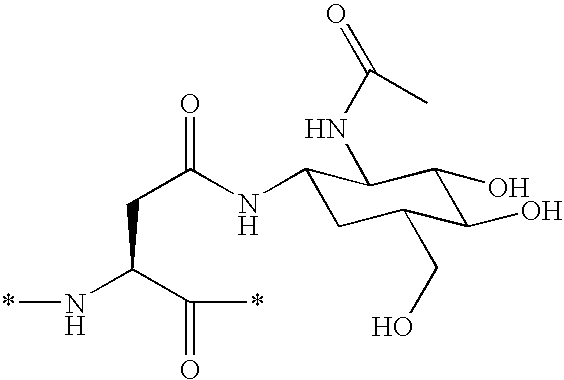Novel imaging agents
a diagnostic imaging and agent technology, applied in the field of diagnostic imaging agents, can solve the problems of insufficient cell death, inability to regulate apoptosis, neuropathologies, etc., and achieve the effect of avoiding the formation of tumors, reducing tumor growth, and reducing tumor growth
- Summary
- Abstract
- Description
- Claims
- Application Information
AI Technical Summary
Benefits of technology
Problems solved by technology
Method used
Image
Examples
example 1
Synthesis of 1,1,1-tris(2-aminoethyl)methane
(Step a): 3-(methoxycarbonylmethylene)glutaric acid dimethylester
[0190] Carbomethoxymethylenetriphenylphosphorane (167 g, 0.5 mol) in toluene (600 ml) was treated with dimethyl 3-oxoglutarate (87 g, 0.5 mol) and the reaction heated to 100° C. on an oil bath at 120° C. under an atmosphere of nitrogen for 36 h. The reaction was then concentrated in vacuo and the oily residue triturated with 40 / 60 petrol ether / diethylether 1:1, 600 ml. Triphenylphosphine oxide precipitated out and the supernatant liquid was decanted / filtered off. The residue on evaporation in vacuo was Kugelrohr distilled under high vacuum Bpt (oven temperature 180-200° C. at 0.2 torr) to give 3-(methoxycarbonylmethylene)glutaric acid dimethylester (89.08 g, 53%).
[0191] NMR 1H(CDCl3): δ 3.31 (2H, s, CH2), 3.7(9H, s, 3×OCH3), 3.87 (2H, s, CH2), 5.79 (1H, s, ═CH,) ppm.
[0192] NMR 13C(CDCl3), δ 36.56, CH3, 48.7, 2×CH3, 52.09 and 52.5 (2×CH2); 122.3 and 146.16 C═CH; 165.9, 170...
example 2
Alternative Preparation of 1,1,1-tris(2-aminoethyl)methane
(Step a): Amidation of Trimethylester with p-methoxy-benzylamine
[0213] Tris(methyloxycarbonylmethyl)methane [2 g, 8.4 mmol; prepared as in Step 1(b) above] was dissolved in p-methoxy-benzylamine (25 g, 178.6 mmol). The apparatus was set up for distillation and heated to 120° C. for 24 hrs under nitrogen flow. The progress of the reaction was monitored by the amount of methanol collected. The reaction mixture was cooled to ambient temperature and 30 ml of ethyl acetate was added, then the precipitated triamide product stirred for 30 min. The triamide was isolated by filtration and the filter cake washed several times with sufficient amounts of ethyl acetate to remove excess p-methoxy-benzylamine. After drying 4.6 g, 100%, of a white powder was obtained. The highly insoluble product was used directly in the next step without further purification or characterisation.
(Step b): Preparation of 1,1,1-tris[2-(p-methoxybenzylamino)...
example 3
Preparation of 3-chloro-3-methyl-2-nitrosobutane
[0219] A mixture of 2-methylbut-2-ene (147 ml, 1.4 mol) and isoamyl nitrite (156 ml, 1.16 mol) was cooled to −30° C. in a bath of cardice and methanol and vigorously stirred with an overhead air stirrer and treated dropwise with concentrated hydrochloric acid (140 ml, 1.68 mol) at such a rate that the temperature was maintained below −20° C. This requires about 1 h as there is a significant exotherm and care must be taken to prevent overheating. Ethanol (100 ml) was added to reduce the viscosity of the slurry that had formed at the end of the addition and the reaction stirred at −20 to −10° C. for a further 2 h to complete the reaction. The precipitate was collected by filtration under vacuum and washed with 4×30 ml of cold (−20° C.) ethanol and 100 ml of ice cold water, and dried in vacuo to give 3-chloro-3-methyl-2-nitrosobutane as a white solid. The ethanol filtrate and washings were combined and diluted with water (200 ml) and coo...
PUM
| Property | Measurement | Unit |
|---|---|---|
| Force | aaaaa | aaaaa |
| Electric charge | aaaaa | aaaaa |
| Capacitance | aaaaa | aaaaa |
Abstract
Description
Claims
Application Information
 Login to View More
Login to View More - R&D
- Intellectual Property
- Life Sciences
- Materials
- Tech Scout
- Unparalleled Data Quality
- Higher Quality Content
- 60% Fewer Hallucinations
Browse by: Latest US Patents, China's latest patents, Technical Efficacy Thesaurus, Application Domain, Technology Topic, Popular Technical Reports.
© 2025 PatSnap. All rights reserved.Legal|Privacy policy|Modern Slavery Act Transparency Statement|Sitemap|About US| Contact US: help@patsnap.com



